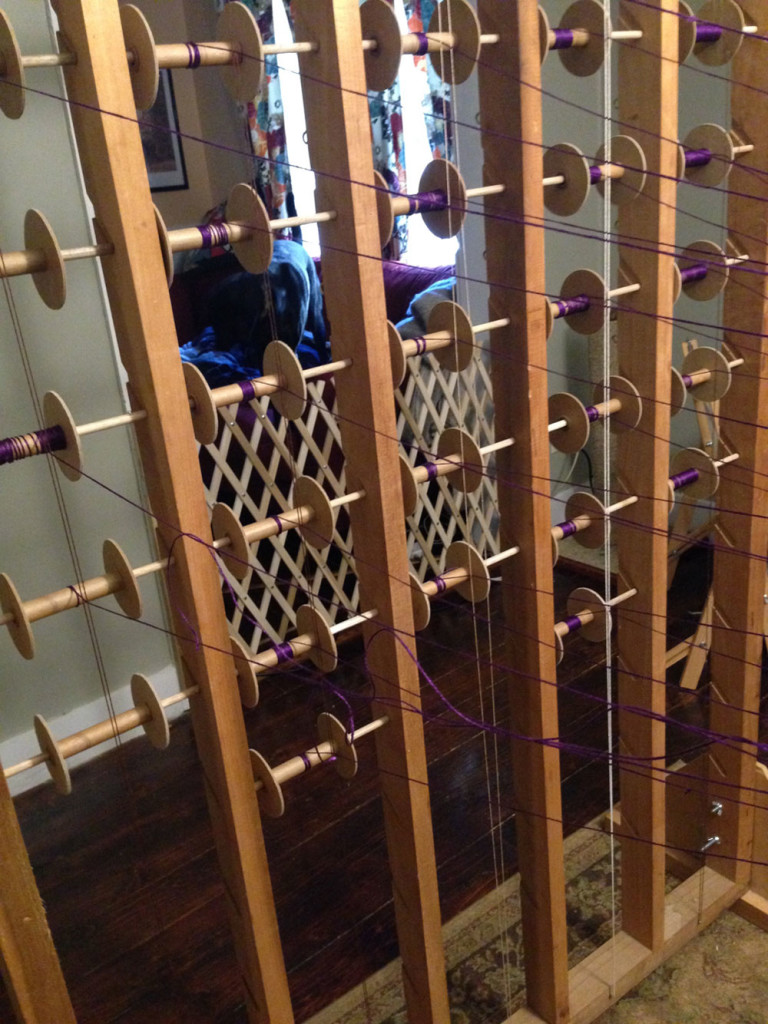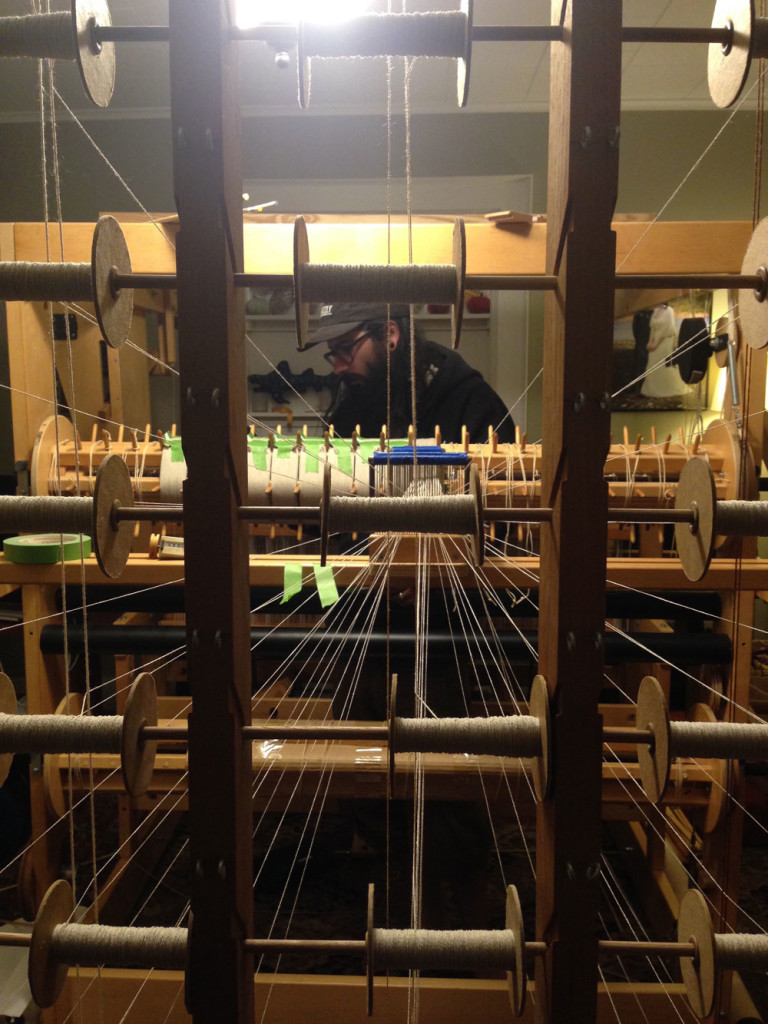Moment of truth: Sectional Warping scares the living daylights out of me.
It is not because it isn't a great method of warping- it is! It is because it is totally mystifying to me at this point in my career.
I have a great little pamphlet called "Sectional Warping Made Easy" and it is a lovely little step by step about how to wind on a sectional beam. There are some key things that it misses, like how to treat the ends when they are cut to make it easier to thread. It is also a little dated so some new technologies that have been developed since this book was printed are missing. There are some video tutorials online, but they are very slow paced or poorly shot, and missing some key things like "How do I adjust the rotating reed on the tension box to make the warp lie flat on the beam?"
What have I learned so far?
-
Each rotation of the beam does not perfectly equal .5 yards. Basic math would have pointed out to me that with each rotation of the beam, a little bit more is added to the circumference of the beam. How did I learn this? I was winding on warp for a three panel blanket, and instead of using the counter on the tension box (which is set to Meters, not yards) I was using my knitting counter-clicker to click each time it rotated. Big mistake. I ran out of yarn a few inches from the end of the beam and I was livid. Lesson learned - use the counter. Even if it means to steal the counter from the bobbin winder and use it on the tension box so it is accurate.

Proof that the bobbins weren't all wound evenly and they ran out quickly because of the inaccurate rotation measurements. Proof that I am still learning. -
If the warp does not lie perfectly flat, and is tilting within the section, one way or another, your overall tension will be off. This was obnoxious to know that everything had to be perfect. I understand that weaving is a mindful craft and the act of weaving is a precise execution of an idea. But I have been trying to figure out how to get everything perfect when I wind on. This rotating reed dumb-founds me and I can't quite get the warp to lay nicely on top of itself as it wraps around the beam. Lesson learned - take my time. Really make sure something is well adjusted before completing the winding of that section.

These are some sections that were wound better. They are still not perfect, you can see they tilt a little one way or the other. But it is progress. - Organization is key. All of these threads are just cut and can very easily get twisted around. If it isn't taped in anyway it can get out of hand. Like I mentioned in lesson two weaving is a mindful practice. It is very easy to twist the warp around when you are bringing it forward to the heddles. So, y lesson learned here is: find a way to make this process easier so it doesn't cause a headache later.
This is only the beginning of learning this new warping technique- and as soon as I demystify the rotating reed on the tension box for myself I will fill you all in! It also leads to a note that my husband has been very patient with me as I have been standing there cursing each new section I do. Tonight he stood on the other side of the beam and watched as the warp wound on and adjusted the tension box every little bit to make sure it was going on evenly. He has been super helpful trying to figure this process out with me. Thank you, Honey!

theodore wizorek
Tegan Frisino
Laurie Mrvos
Tegan
Michelle Herrington